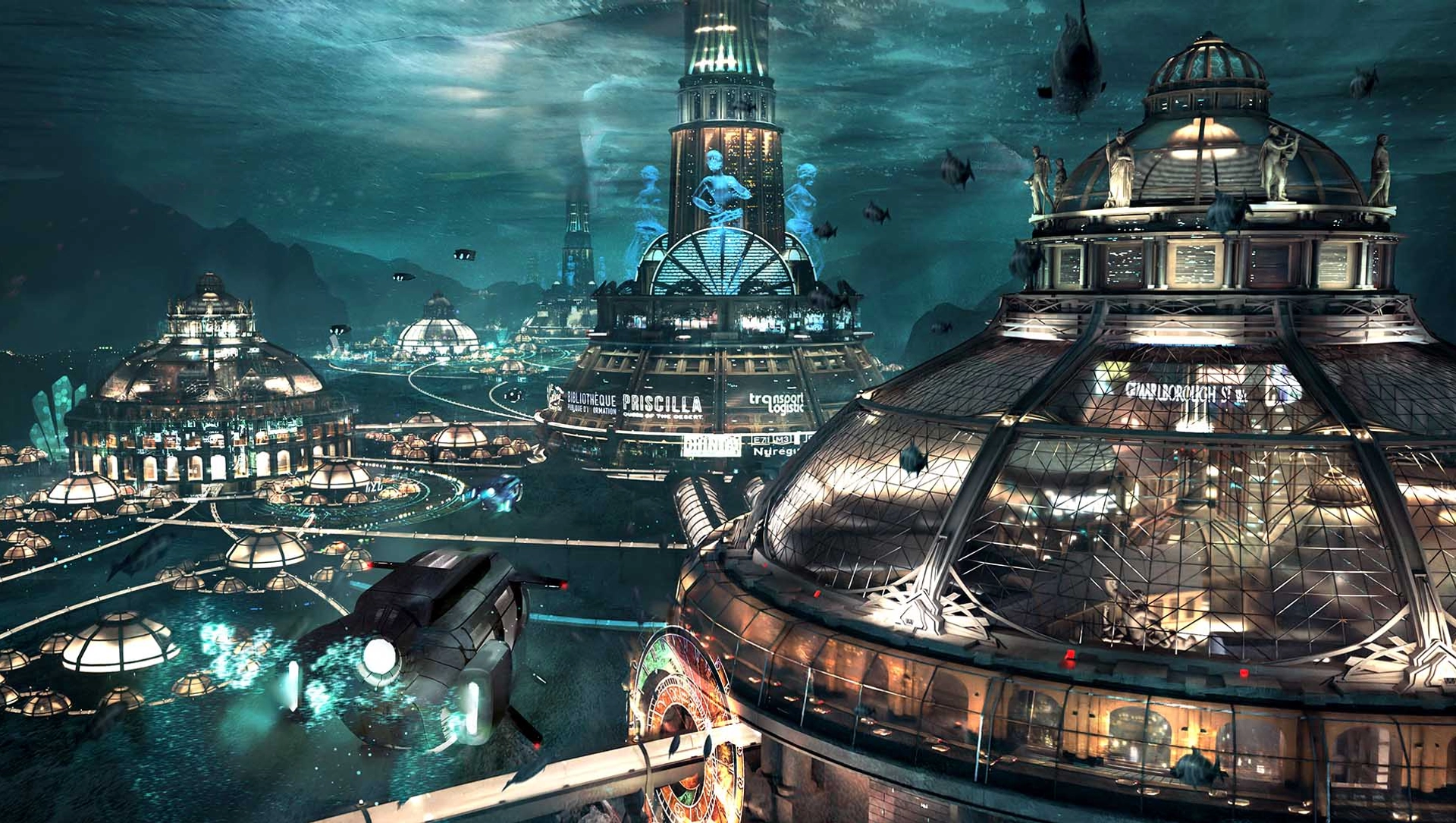Located in the EUROPOLIS, in Citivas GRATIA, Calais-Dover Undersea Belt connects the ruins of England and France by sea. It is a conglomerate of underwater cities built on the Channel Tunnel.
The distance between Calais and Dover was the shortest route between England and France. In war, this is the fastest route to take for any European state to initiate an attack on the United Kingdom. In human history, several wars have broken out to secure this area. In the peace after World War II, both countries agreed on constructing an undersea tunnel on the path in the name of goodwill and international trade.
Since the Channel Tunnel was constructed dozens of meters below sea level, even advanced satellites could not detect activity down there. The Calais-Dover Undersea Belt was developed by G.U.N. as a vital military station for human allies during the FATE War. Subsequent to the war, dome settlements were built on top of the tunnel, from Dover in old England to Calais in what remains of France, forming a glamorous belt under the Atlantic Ocean.
This is the story of Calais-Dover Undersea Belt. Transparent domes cluster together, forming underwater settlements. The Calais-Dover Undersea Belt is like a necklace of precious pearls worn by the goddess Europa, the jewel of the continent. After the FATE War, the European continent was burnt and wasted, making the belt as dazzling as a diamond.
There are eleven relay stations standing along the belt above the water line. Drawing from the same origin as Europa, these stations are named after the ancient Greek gods — Hera as the Queen of the gods, Demeter as the goddess of Agriculture, Poseidon as the god of sea, Athena as the goddess of wisdom, Apollo as the god of the sun, Artemis as the goddess of the hunt, Aphrodite as the goddess of Love, Ares as the god of war, Hephaestus as the god of fire, Hermes as the messenger of the gods, and Hestia as the goddess of the Hearth. Zeus as the father of gods is excluded here, as Z.E.U.S. stands for the only ruler above all these.
In these eleven towers named after the Greek gods, distinguished culture from pre-war European countries can be discovered here: You can take an art trip of Italian renaissance in the tower of Demeter or hear the Celtic flute unique to Ireland in the tower of Artemis. Once one steps in the underwater shuttle that runs on the Calais-Dover Undersea Belt, a visitor can expect a wonderful trip around Europe as it was before the war.
Taking a tour by underwater shuttle is pleasant, but piloting a private submarine is even better. In a self-guided tour under the sea, one can bring a biologist for an exploration of marine ecology. Both transportation means are popular with tourists travelling here.
Administration Towers: This region is essentially an independent town, consisting of residential areas and commercial areas. Along the Undersea Belt, an administration tower is set up every 15 kilometers, serving as the core for the surrounding city and extending upwards above the sea. There are eleven administration towers in total, and they are named after Greek gods, excluding Zeus.
Transportation Areas: Alongside the old Channel Tunnel are built numerous pipelines, through which high-speed shuttles run. The high-speed shuttles travel between Swanscombe and Lutetia, two cities which represent the remnants of England and France from before the war.
Underwater Dome Settlements: As the main residential area underwater, every settlement is a basic community for about 500 living units. In larger domes, there are public facilities such as schools, libraries, government offices, and business streets. The complicated pipelines connecting all domes form an intricate network. Some pipelines are used for shuttle services, some for business, tourism, or other purposes.
